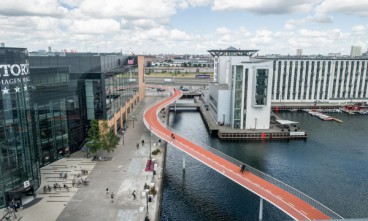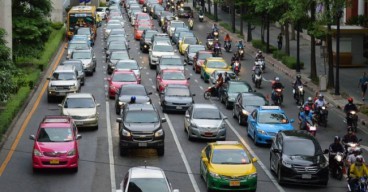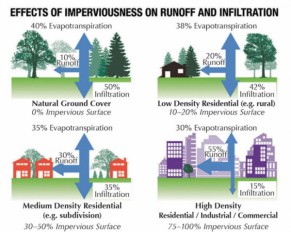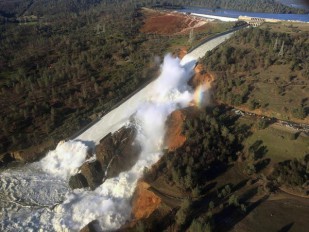Impact of roadway infrastructure on human life risk

A new study, published in Journal Accident Analysis & Prevention, focuses on the impact of roadway infrastructure environment in traffic-related accidents that results in fatalities or injuries.
A new study, published in Journal Accident Analysis & Prevention, focuses on the impact of roadway infrastructure environment in traffic-related accidents that results in fatalities or injuries.
Currently, about 276 million vehicles operate in the United States. Several studies on road safety have been published but little is known about the impact of the roadway design and its subsequent facilities (built environment). Therefore, the risk of a severe accident cannot be correlated with the road and travel environment.
Quantifying road safety is a challenging issue as it depends on multiple variables. There is a major difference between risk-per-kilometer and the total risk of a severe accident. For example, data show that traveling in U.S. is 88.6% or 257% more hazardous depending on the parameter investigated (risk-per-kilometer and the total risk) compared to the United Kingdom.
Consequently, as the distance traveled is a major variable that affects the results of road safety on a single person, identifying the impact of the built environment is crucial. The researchers examined the risk variation of those environments, based on the assumption that some of them are more hazardous than others.
According to Dr. Louis A. Merlin, Assistant Professor in FAU’s School of Urban and Regional Planning within the College for Design and Social Inquiry and lead author of the study, most research in the field uses non-theoretical models to correlate traffic collision, injuries and the built environment. “Because some environments are riskier than others, they produce more crashes and injuries per unit of travel. However, dissecting and interpreting the risk/crash data is challenging. Before we can know how risky a given built environment is, we have to know how many people are traveling there, and in many cases, for pedestrians and cyclists, this data is not available,” Dr. Louis, mentioned.
Not understanding the effect of built environment in road safety leads to misleading assumptions. Some variations in crash accidents related to the aforementioned impact may not be taken into consideration at all. “It becomes difficult to disentangle whether certain environmental features are in fact ‘riskier’ than others or whether the safety results are simply attributable to reductions in exposure, such as the amount of people traveling in a given environment, as a result of environments that discourage travel,” Dr. Eric Dumbaugh, Associate professor in FAU’s School of Urban and Regional Planning and co-author of the study, stated.
According to the scientific team, the study tackles those concerns and provides a relationship between road risk and built environment. The authors acknowledge that some of the variables should be further investigated.
Source: Florida Atlantic University
Source: Florida Atlantic University
Want to read more like this story?

Using biometric data to make urban infrastructure safer
Jul, 25, 2021 | NewsA new study focuses on utilizing biometric data to evaluate urban infrastructure safety and prevent...

Road safety increased due to cycling lanes
Jun, 28, 2019 | NewsA detailed study shows that cycling lanes have made the roads safer for everyone. Scientists from...

Are underground roads the solution for better urban environments?
Apr, 10, 2019 | NewsTraffic congestion has become a critical issue in urban environments as it decreases the quality of...

Bridge crossings that protect wildlife
Feb, 17, 2021 | NewsAuthorities across the world are trying to implement a wildlife-friendly strategy when it comes to r...

Evaluating the impact of urban development on flood risk
Feb, 13, 2020 | NewsAccording to a new study, urban development may cause severe issues when it comes to flooding risk....

"Lecture: Understanding and enhancing the interconnections between human experience and the built environment", part of "The future of Infrastructure today!" webinar series
Feb, 25, 2025 | EventLecture date: Friday March 7, 2025, 9:00-10:00AM PST "The future of Infrastructure today!” is a mon...

Challenges for sustainable road networks in UK
Jan, 10, 2021 | NewsPreserving road networks is a challenging and abiding task that requires both short-term and lo...

Study quantifies human infrastructure on oceans for the first time
Aug, 31, 2020 | NewsScientists from Australia and the United Kingdom managed to quantify the manmade constructions that...

New study explains how global warming significantly increases the size of floods
Feb, 03, 2020 | NewsAccording to new research evidence, warming environment leads to more rainfalls and less snow accumu...
Trending

Vertical gardens in Mexico City to combat pollution

Saudi Park Closed After 360 Big Pendulum Ride Crashes to Ground, 23 injured

Characteristics of Load Bearing Masonry Construction

Taipei 101’s impressive tuned mass damper

Dutch greenhouses have revolutionized modern farming

Federal court rules Biden’s offshore drilling ban unlawful


